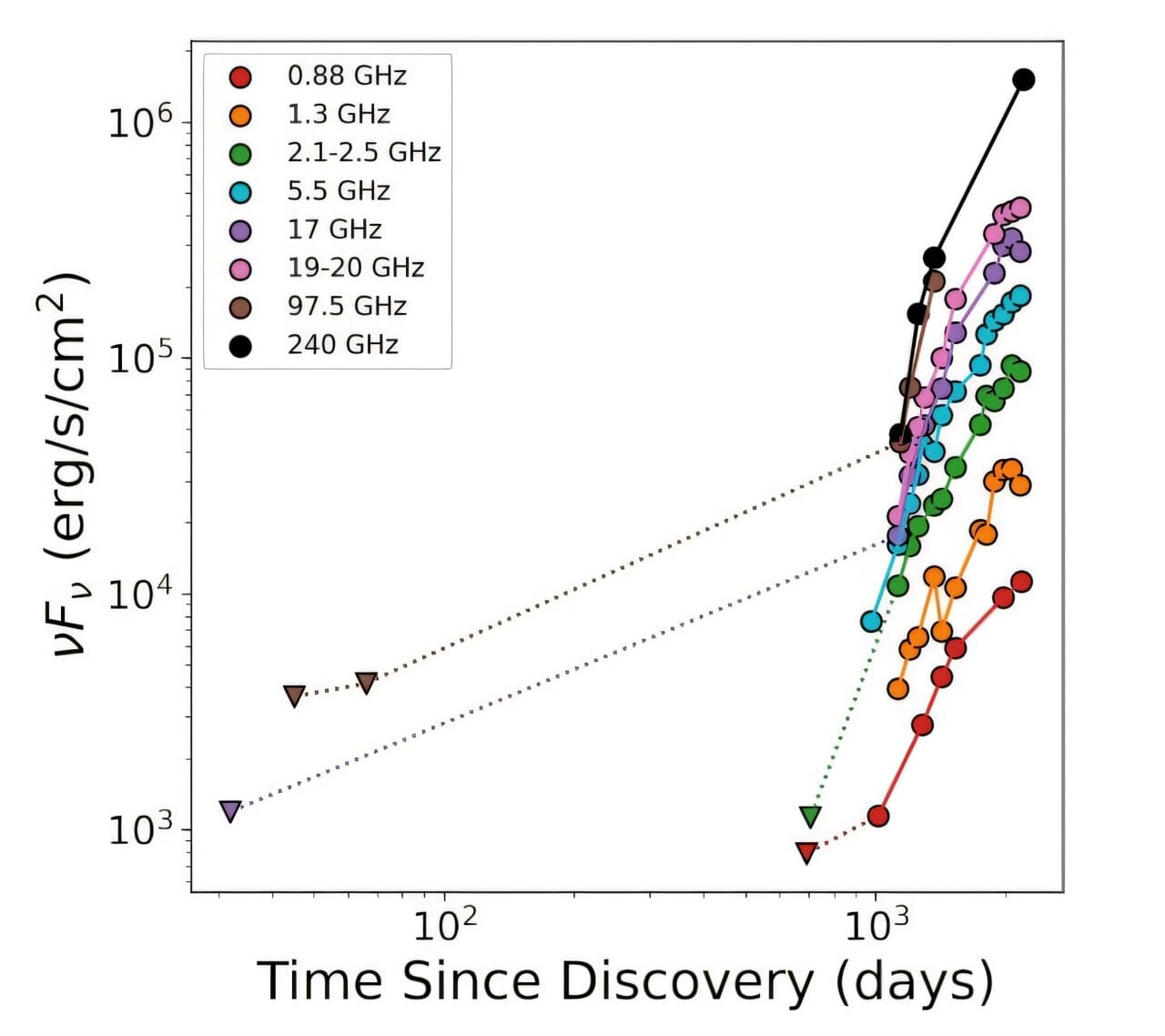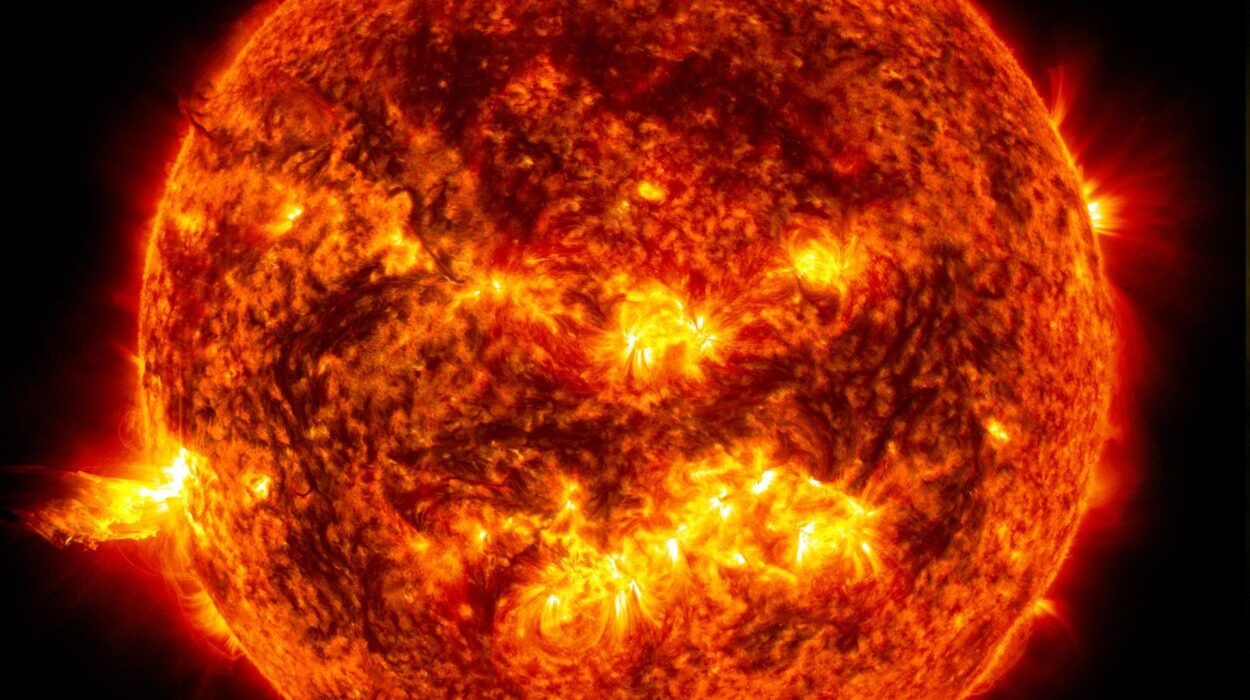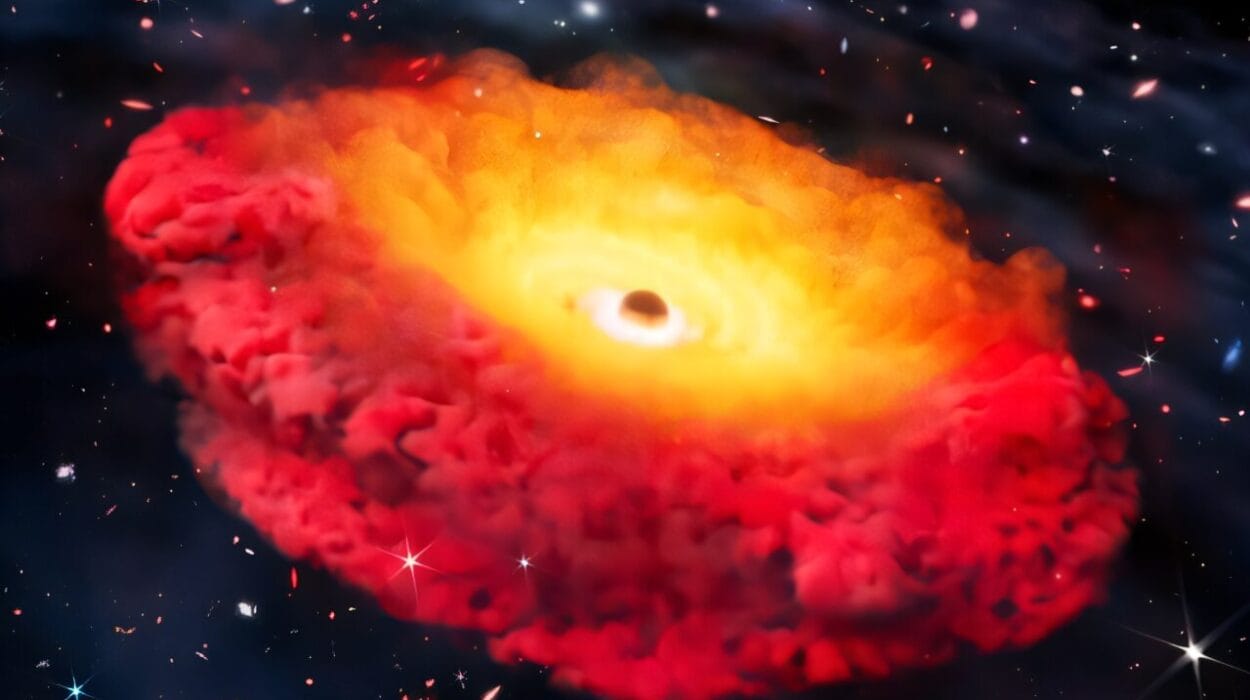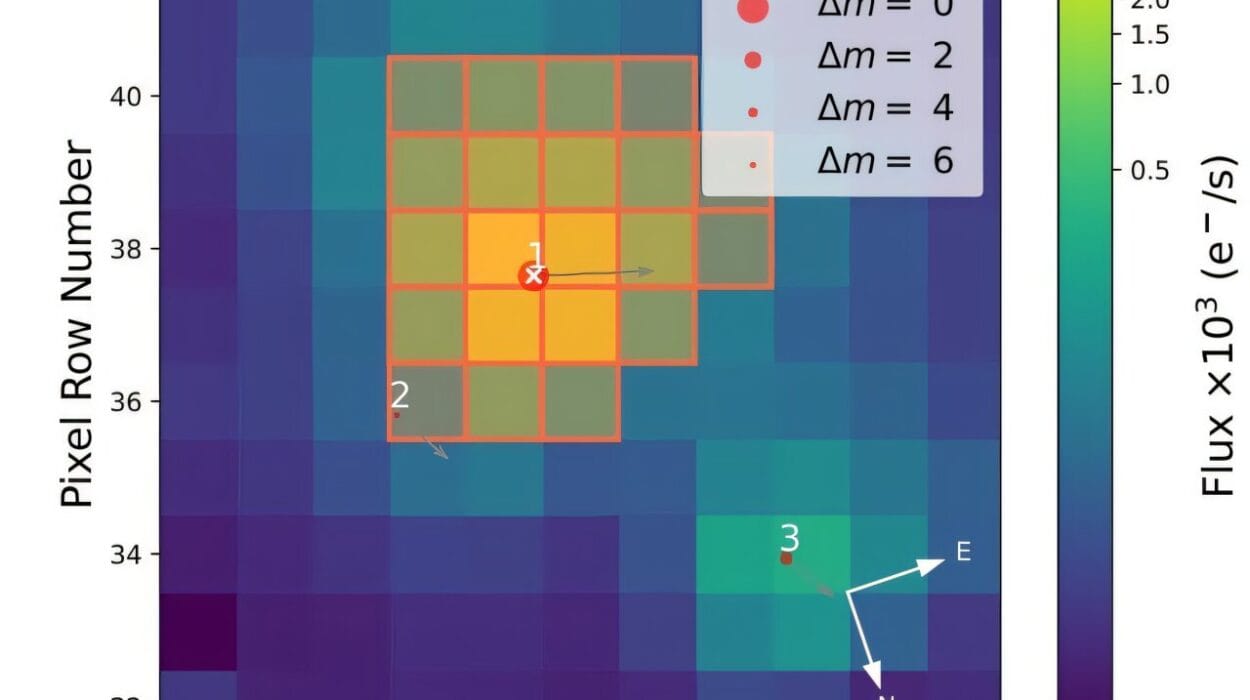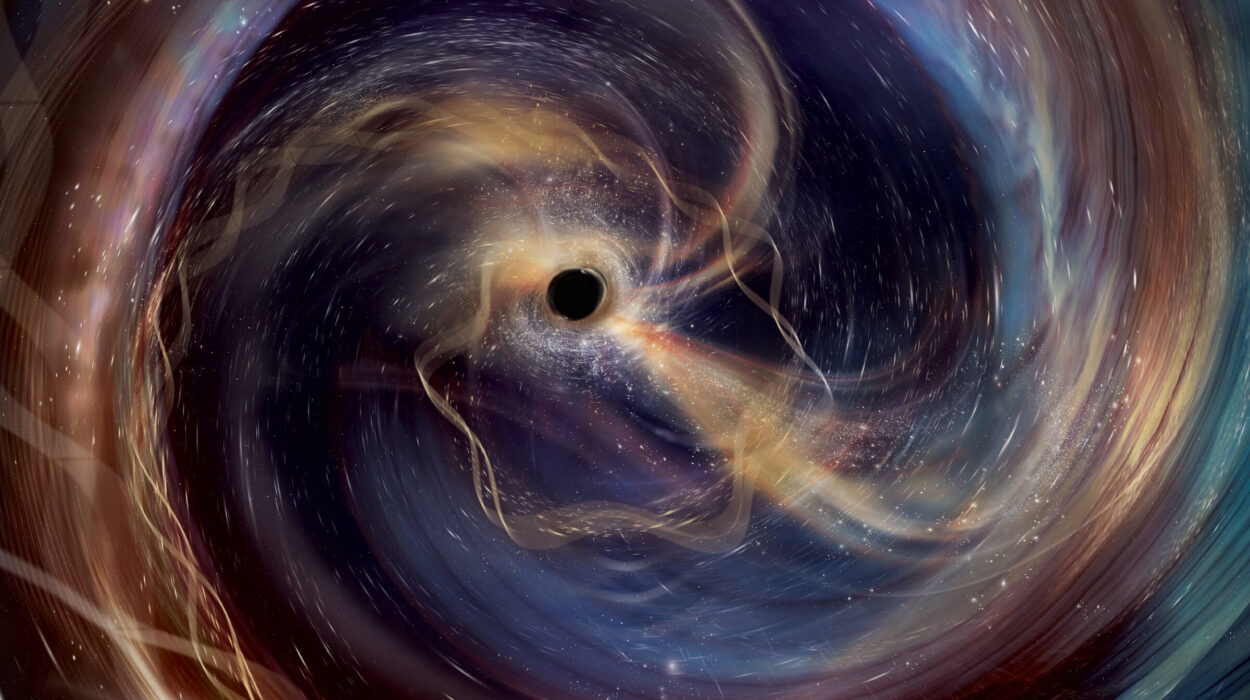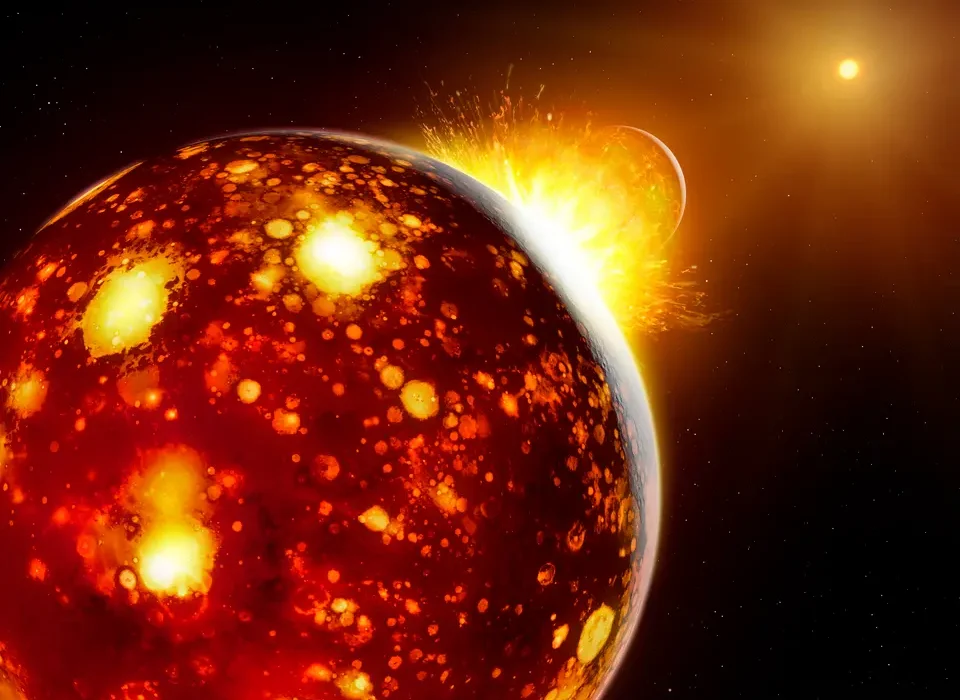Far beyond the reach of any spacecraft, across a staggering 665 million light-years of darkness and time, something extraordinary happened. A star, peacefully orbiting in a galaxy long past its prime of starbirth, wandered too close to the sleeping dragon at its heart—a supermassive black hole. What followed was not immediate destruction but a slow, agonizing death—a celestial tragedy that would take years to fully unfold, its echo eventually reaching Earth not through light alone, but through the invisible hum of radio waves.
This event, named AT2018hyz, is what astronomers call a tidal disruption event (TDE)—one of the most violent processes known in the cosmos. And thanks to an international team of astronomers wielding some of the most powerful radio telescopes on the planet, we now understand this particular event more intimately than ever before. What they found shook their expectations, rewrote the boundaries of known TDE behavior, and opened a window into the mysterious physics surrounding black holes.
When Stars Cross the Line
Black holes are often described as cosmic vacuum cleaners, but that image misses the sheer brutality of their nature. They don’t simply “suck in” matter; they tear it apart. When a star ventures too close, the difference in gravitational pull between the side of the star nearest to the black hole and the side farthest away becomes catastrophic. This effect—tidal force—can rip a star into threads of hot plasma. This is the heart of a TDE.
The shredded remains of the star don’t fall in all at once. Some of the stellar debris slingshots away into space, while the rest forms a swirling disk of matter—an accretion disk—that spirals ever closer to the black hole. As the gas accelerates and compresses, it heats up and emits a torrent of light across many wavelengths. Astronomers detect this burst and know: a star just died at the hands of a black hole.
AT2018hyz, discovered in 2018 by the All-Sky Automated Survey for SuperNovae (ASASS-SN), fit this story—at first. But as the years passed, the event began to tell a stranger tale.
The Signal That Wouldn’t Fade
In 2022, four years after AT2018hyz’s initial optical discovery, a curious thing happened. Radio telescopes began picking up emissions from the region where the TDE had occurred. Led by astrophysicist Dr. Yvette Cendes from the University of Oregon, a team of astronomers began to pay close attention. Normally, radio emissions from TDEs fade fairly quickly or remain faint. But in this case, the signal was growing stronger—not weaker.
This was no echo. This was a resurgence.
What began as a mild signal turned into a flood. The brightness in radio frequencies increased dramatically, making AT2018hyz suddenly one of the most luminous non-relativistic TDEs ever observed in radio. It even began to rival the powerful output of Sw 1644+57, a known relativistic TDE—one that had launched a powerful jet nearly directly at Earth.
AT2018hyz, however, had shown no such signs… or had it?
Listening to a Ghost with a Radio Ear
The new observations, published on July 11 and now available on the arXiv preprint server, were made possible through a sweeping two-year campaign involving some of Earth’s most sophisticated instruments: MeerKAT in South Africa, the Atacama Large Millimeter/submillimeter Array (ALMA) in Chile, and others. These telescopes together gave scientists a panoramic view of the radio emissions across multiple frequencies.
What they saw was unprecedented.
The radio light curve of AT2018hyz continued to climb rapidly across all bands, unlike any previously known TDE of its kind. At its peak, the luminosity reached 10 duodecillion ergs per second—a number so vast it defies simple imagination. For comparison, the total power output of our Sun is about 4 x 10²⁶ watts. AT2018hyz was spewing out energy billions of times greater, all from a relatively small volume of space being devoured by a cosmic monster.
The brightness wasn’t the only surprise. The peak frequency—the wavelength where the most energy was emitted—remained remarkably stable over time. In typical radio outbursts, this peak frequency tends to drift. But here, the only thing changing was the sheer intensity of the emission. Something was powering this persistent brightening, and it wasn’t slowing down.
Two Theories, One Mystery
Faced with this unexpected data, Cendes and her team proposed two leading explanations for the source of the radio light.
One scenario paints the picture of a spherical outflow—a sort of bubble of debris ejected roughly 620 days after the initial disruption. Traveling at about 30% the speed of light (0.3c), this outflow would slam into the interstellar medium like a shockwave, heating it and generating radio emission through the interaction of magnetic fields and particles.
But there’s another, more exotic possibility.
What if we missed the jet?
In this second hypothesis, AT2018hyz might have launched a relativistic jet—a narrow, ultra-fast beam of particles moving close to the speed of light. But if that jet was pointed far away from our line of sight—at an angle of about 80 to 90 degrees—then we wouldn’t have seen its early, dramatic effects. Only now, as the jet interacts with surrounding material and expands, are we seeing its signature in radio waves.
This hypothetical jet would have a Lorentz factor of around 8, meaning it’s moving at over 99.9% the speed of light, carrying kinetic energy on the order of 10⁵² ergs—an almost incomprehensible blast of force.
Both explanations fit the data. But each implies a very different kind of death scene for the star.
A Glimpse into the Black Hole’s Soul
AT2018hyz is more than a curiosity. It is a crucial case study in understanding what black holes do to the universe around them. Not all TDEs behave the same way. Some vanish in a brief flare. Others linger. A few become louder with time. AT2018hyz challenges the existing taxonomy of TDEs—forcing astronomers to rethink the dividing lines between relativistic and non-relativistic events.
Did this black hole hesitate before unleashing its full fury? Or did it launch something ferocious in secret, hidden from view by cosmic geometry?
What’s clear is that black holes are not just gluttons that feed passively. Sometimes, they roar. Sometimes, they whisper for years before screaming. And in that delayed fury, they give us rare access to the mechanics of spacetime itself.
A Star’s Final Gift to Science
Though the star at the heart of AT2018hyz is long gone—its atoms now part of a swirling storm around a black hole—it continues to speak to us. Through carefully captured data, through models run on supercomputers, through the eerie precision of light that took millions of years to reach us, it tells a story of transformation and violence, of delay and discovery.
Its death, unlike any ordinary demise, is an act of creation: creating insight, creating mystery, creating awe.
As radio telescopes continue to listen for the fading breath of this distant event, more may be revealed. Perhaps the next wave of data will confirm a jet. Perhaps new TDEs will emerge with similar fingerprints. But for now, AT2018hyz stands as a rare cosmic riddle—one that invites not just answers, but deeper questions.
Conclusion: Death, Rewritten in Radio
In the grand scheme of the cosmos, stars die every day. But not like this. Not with a final act that plays out over years, whispering across the electromagnetic spectrum, challenging everything we thought we knew.
AT2018hyz is a reminder that the universe is not finished surprising us.
Somewhere in a quiet corner of the sky, a dead star still sings—and the Earth, 665 million years later, is finally listening.
Reference: Yvette Cendes et al, Continued Rapid Radio Brightening of the Tidal Disruption Event AT2018hyz, arXiv (2025). DOI: 10.48550/arxiv.2507.08998
